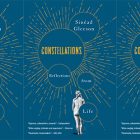The Embodied Narrator in How the Word is Passed: A Reckoning with the History of Slavery Across America

“I’ve come to believe that there’s a difference between history and nostalgia, and somewhere between these two is memory.” So says David, a tour guide at Thomas Jefferson’s Monticello plantation, to Clint Smith in How the Word is Passed: A Reckoning with the History of Slavery Across America, out tomorrow. Smith’s book is an examination of memory through an examination of sites that represent our country’s collective memory of slavery—which tend towards one of the two ends of the scale David presents in the book’s first chapter. As Smith visits historical sites across the country with some relationship to slavery (as well as one site in Senegal), he makes an important and effective call for us to examine how it is we remember our past, and how central our historical memory is to our existence today.
Smith is present as an embodied narrator throughout the book’s seven chapters, each of which tells of a visit to a historical site that demonstrates the ways we reckon (or fail to reckon) with our country’s slaveholding past. The story of his visit to each site weaves in and out of each chapter, alongside a larger telling of the historical narrative the site represents, aided by the work of public scholars who have elucidated that history, which grounds Smith’s experiences in each site’s broader historical context. The resulting text drives Smith’s arguments home in ways that a traditional work of history could never do—as an embodied narrator, Smith allows us to see just how present slavery’s legacies remain, how horrifying our history is, and how active our wars for a truthful telling of our history are.
Smith’s presence at each site enables the reader to wrestle with both the history the site represents, as well as with the afterlives of that history. When Smith visits Blandford Cemetery in Petersburg, Virginia, for example, the reader doesn’t just get a history of the Sons of Confederate Veterans, or a history of money devoted to commemorating soldiers who fought to preserve the institution of slavery (though we do get both of those things). The reader also gets a vision of the site’s existence today: we see the lawnmowers snaking through the cemetery, “their vibrating bodies held by Black men steering them in between tombstones draped in Confederate flags.” Later in the same chapter, as Smith recounts what he experienced at a Sons of Confederate Veterans gathering at the cemetery, we’re able to see the distortions of history possible at such a site, the way memory can tend more towards nostalgia than history—“a fantasy about the past using no facts,” as David further defines the term.
Smith’s presence at each site also gives him the opportunity to reflect on who the site is presenting towards—who it imagines as its audience, and who that leaves out. When he visits Monticello, Smith notices that the vast majority of the visitors are white, commenting, “It’s not so much unexpected as it is markedly conspicuous, to see a plantation that has had its ratios reversed.” The way we collectively remember slavery and the sites related to it creates this reality, in some cases making comfortable those who should feel challenged and humbled by such a history. As Smith reflects later after a conversation on the history of the racial makeup of the tour guides at Monticello: “What would motivate a Black family to come spend the day at a plantation if they were concerned about how the story of that land would be told, what kind of people would be standing alongside them as it was told, and who was telling it?”
Smith’s narrative presence also allows the reader to meet those tasked with telling these stories: a tour guide recounting the history of slavery in New York City, an assistant warden at Louisiana’s Angola Prison tasked with leading public tours, and the coordinator of an annual Juneteenth celebration, to name just a few. There’s a real generosity in the way Smith narrates his interactions with these tellers of history; where he can, he brings them to visceral, full life. Smith often spends entire paragraphs describing what they were wearing on the day he visited, or creating a picture of their face and distinctive mannerisms for the reader. Smith is also intentional about providing space for their words, quoting them at great length throughout the book, passing the mic along so the reader can be present with these history-tellers. It’s a very effective technique in examining who tells our collective stories, how we tell those stories, and why that matters.
In a few cases, it also provides those guides with the chance to tell on themselves. In his visit to Angola Prison, for example, this technique provides the framework for Smith to dissect the power of deflection that many of these sites employ, and that we as a country have embedded in our historical memory. Angola Prison is an infamous state penitentiary with deep connections to slavery, including the fact that it rests on the site of a former plantation. Roger, an assistant warden at the prison and the tour guide for Smith’s visit, gives a cursory overview of some of the prison’s negative past, but chooses to focus mostly on what the prison has done in recent years to improve the quality of life for those incarcerated there (changes, Smith points out in a section on the prison’s death row, that appear to have been made following a series of lawsuits over the conditions at the prison—a fact Roger fails to mention). When Smith asks Roger to “talk a little bit about the prison’s relationship to slavery,” Roger’s instinct is to deflect: he nods to the prison’s horrific past, and then comments, “But when you go from that, and you go years and years and years, and you get to where we are with the redemption and the change—then that’s what I like to talk about. Our history is our history, and I can’t change that.” For Smith, this deflection is emblematic of a larger approach to history to which our country clings: “Roger’s ‘I can’t change that’ seemed to provide the pretense of acknowledgment while creating distance from personal culpability.”
Smith’s physical presence at Angola gives us insight beyond talk of “prison reform,” or laudations for a prison “making the best” of its dark history. Rather, his presence provides the opportunity for a critical, honest analysis of how the site remembers its past and how it exists today, and how its very existence represents a failure to reckon with and make right its history. As Smith leaves Angola, he sees a group of Black men working in a field, “two dozen men in white-and-blue sweatshirts with garden hoes methodically rising in their hands and then falling to the earth.” “The parallel with chattel slavery,” he goes on, “made it feel as if time was bending in on itself. There was no need for metaphor; the land made it literal.” Angola’s failure to reckon with its past, and the implications of that past for the present, makes it a site of damning historical repetition.
Ultimately, and most importantly, Smith uses his experience of these sites to honor those who were enslaved. As he wishes to do for the men working the field at Angola (“I wanted so desperately to ask the bus driver to stop, to be able to get off the bus and go speak with these men . . . I did not want to remember them as distance and silence”), so he wishes to do for the people white Americans enslaved. For many of us, to the degree that we learn about these people’s lives at all, it’s through the stories of figures like Frederick Douglass and Harriett Tubman. Smith reflects on how solely emphasizing such figures, remarkable and worthy of celebration as they are, can be used to obfuscate the larger reality: “our country’s teachings about slavery, painfully limited, often focus singularly on heroic slave narratives at the expense of the millions of men and women whose stories might be less sensational but are no less worthy of being told.” Smith goes on, “This, I now realize, is part of the insidiousness of white supremacy that illuminates the exceptional in order to implicitly blame those who cannot, despite the most brutal circumstances, attain superhuman heights. It does this instead of blaming the system, the people who built it, the people who maintained it.” His experience of the Whitney Plantation in Wallace, Louisiana gives the reader a look into a site that bucks this trend through the way it makes the “voices and stories of enslaved people . . . the foundation of how visitors experience the Whitney.” As Yvonne, Smith’s Black tour guide at the Whitney, reflects, “‘If you can’t see them for being people, you can’t see me as a person. I want to get you to see them, because I know as a Black woman what my challenges in society have been. It’s stemming from this history, so if I can’t get you to see them, you can’t see the person standing in front of you.’”
Yvonne’s argument drives home what Smith does so well in this book through his narrative presence: providing the space for the reader to engage with the critical history Smith narrates and connecting that history to present realities. There’s much to sit with upon concluding this book—and white Americans, in particular, need to read and sit with this book—but Smith is a generous narrator, inviting us to face our societal and personal histories honestly, and to work towards justice in light of what that reckoning reveals. James Baldwin wrote that history “is literally present in all that we do”; Smith’s book illuminates that reality for slavery in America, interrogating the lies we tell ourselves and helping us see clearly so that we can chart a new path towards justice.
This piece was originally published on May 31, 2021.



